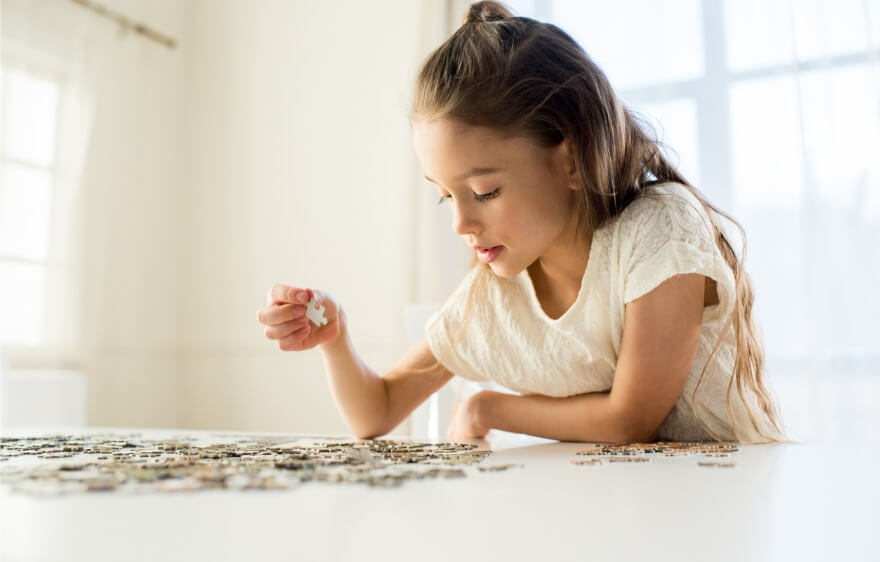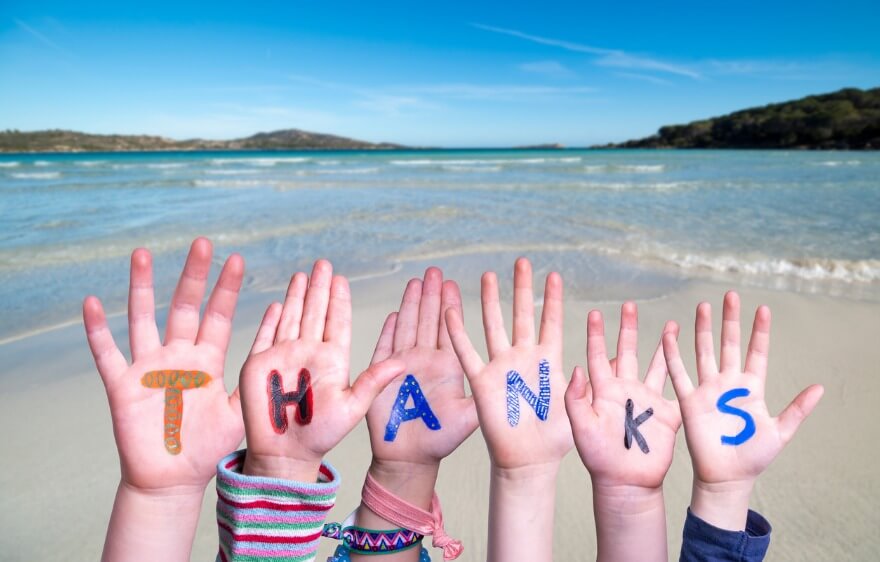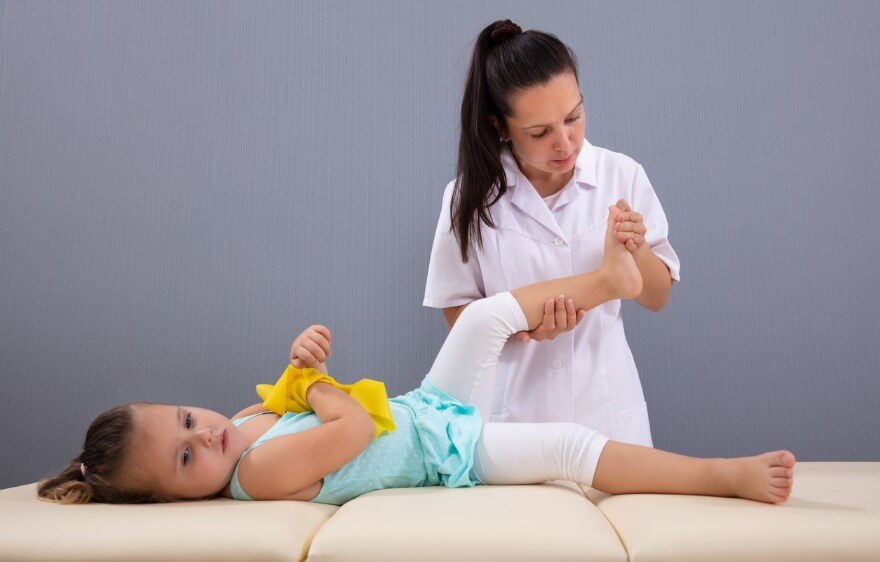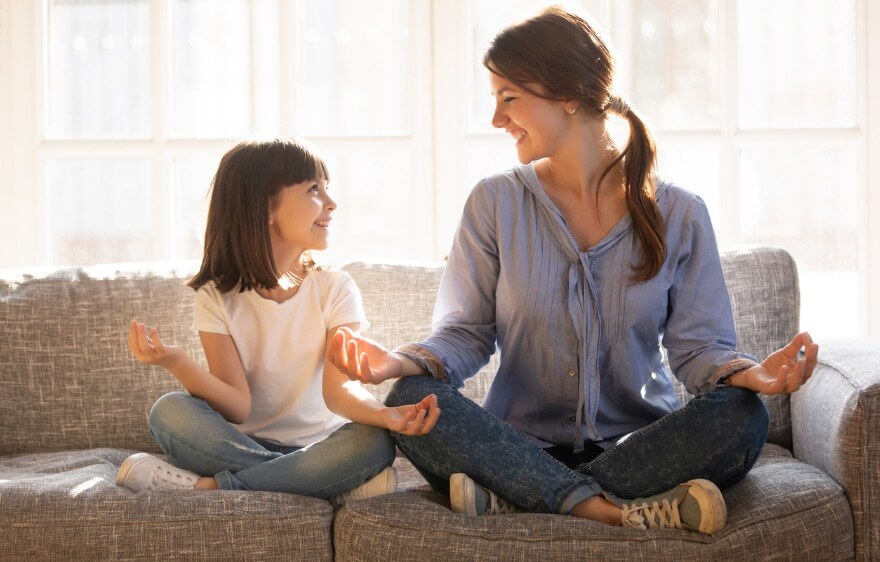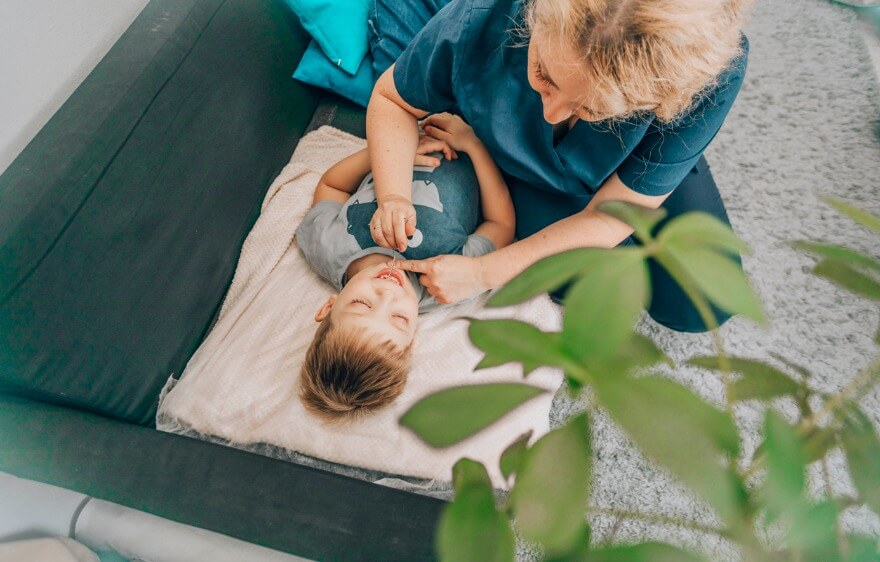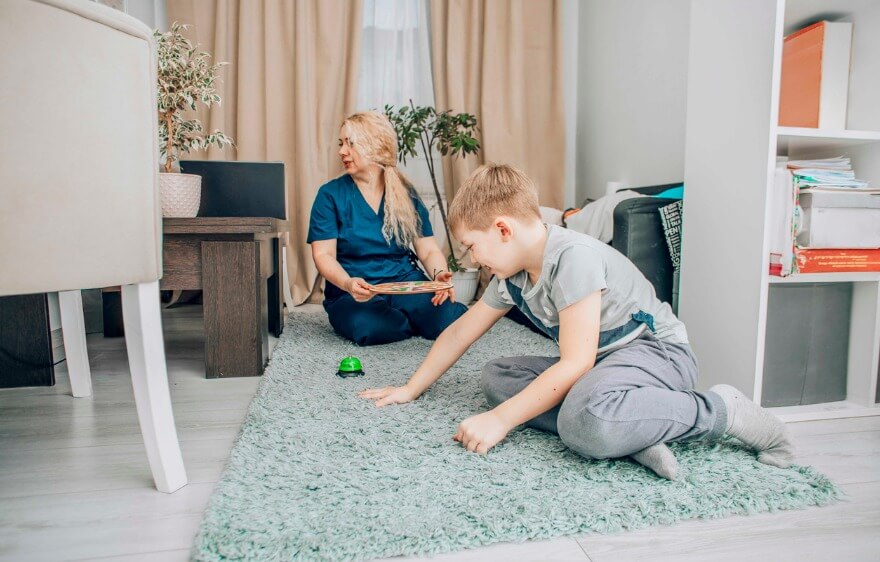It’s time to grab some toys to improve hand-eye coordination! Hand-eye coordination is a crucial skill that allows children to perform everyday tasks such as writing, tying shoes, and playing sports. Toys designed to improve hand-eye coordination can significantly enhance this skill, leading to better performance in school and daily activities. Plus, the kids love them, which makes your therapy sessions smooth. Here are 10 of the best hand-eye coordination toys to help your kiddos process visual information and coordinate it with hand movements:
The 10 Best Toys That Promote Hand-Eye Coordination
1. Building Blocks
Traditional building blocks are excellent for developing hand-eye coordination as children grasp, stack, and balance them to create structures. Blocks come in various shapes, sizes, and materials, providing endless opportunities for creative play and skill development. They also allow children to practice precision and control while trying to fit pieces together or balance structures. Building blocks can help improve fine motor skills, spatial awareness, and problem-solving abilities, making them one of the best hand-eye coordination toys.
2. Puzzles
Puzzles require children to match shapes and fit pieces together, promoting hand-eye coordination and problem-solving skills. Puzzles with large, chunky pieces are ideal for younger children, while more complex puzzles can challenge older kids. As children manipulate puzzle pieces, they improve their ability to coordinate their hand movements with what their eyes are seeing. Puzzles can also enhance cognitive skills such as memory, pattern recognition, and logical thinking.
3. Lacing Beads
Large beads and lacing strings help children develop fine motor skills and hand-eye coordination as they thread the beads onto the string. This activity also enhances patience, concentration, and hand strength. Lacing beads improves dexterity and precision in hand movements, which are essential for writing and other detailed tasks. Additionally, lacing beads can teach counting, color recognition, and sequencing.
4. Throwing and Catching Games
Balls of various sizes for throwing and catching help improve hand-eye coordination through physical activity and play. These games can be played indoors or outdoors and are great for developing gross motor skills. Playing catch helps children learn to track moving objects with their eyes and time their movements to catch or throw the ball accurately. These are some of the best hand-eye coordination toys to improve reaction time and physical fitness.
5. Marble Runs
Building a marble run involves placing pieces together to create a track, enhancing spatial awareness and coordination as children guide marbles through the course. Marble runs can be simple or complex, providing different levels of challenge. This activity helps children understand cause and effect as they see how their actions influence the path of the marble. Marble runs can also improve problem-solving skills, patience, and persistence.
6. Magnetic Fishing Games
These games require children to use a magnetic fishing rod to catch fish, improving precision and coordination. They are engaging and can be used to teach colors, numbers, and counting. By maneuvering the fishing rod to catch the magnetic fish, kids practice fine motor control. These games can also improve attention to detail and concentration.
7. Peg Boards
Pegboards and pegs help children practice placing pegs into holes, enhancing fine motor skills and coordination. Pegboards can be used to create patterns, designs, and shapes, providing a creative outlet for kids. This activity requires children to use their eyes to guide their hands, which is excellent for developing hand-eye coordination. Pegboards can also teach counting, color recognition, and patterning.
8. Ring Toss
This classic game involves throwing rings onto a target, promoting accuracy and hand-eye coordination. Ring toss games can be played individually or in groups, making them versatile and fun. The game helps children develop their aim and timing, which are crucial for hand-eye coordination. Ring toss can also improve concentration, patience, and persistence.
9. Bowling Sets
Mini bowling sets require kids to aim and roll a ball to knock down pins, improving coordination and spatial awareness. Bowling sets can be used indoors or outdoors and are great for developing gross motor skills. This game teaches children to control the force and direction of their throws, which enhances their coordination. Bowling can also be a fun way to improve social skills, as it can be played with friends or family.
10. Shape Sorters
Shape sorters require children to match shapes to corresponding holes, developing hand-eye coordination and problem-solving skills. Shape sorters are ideal for younger children and help with shape recognition and spatial awareness. This activity encourages children to use visual perception to guide their hand movements, which is key for hand-eye coordination. Shape sorters can also teach color recognition, counting, and sorting. Shape sorters, while simple, are one of the best hand-eye coordination toys of all time!
Benefits of Hand-Eye Coordination Toys
- Enhanced Motor Skills: Hand-eye coordination toys help children develop fine motor skills by requiring precise movements of the hands and fingers. These skills are essential for tasks such as writing, drawing, and using utensils. Enhanced motor skills not only aid in school activities but also in everyday tasks, making children more self-reliant.
- Improved Academic Performance: Children with strong hand-eye coordination tend to perform better in school, particularly in subjects that require fine motor skills, such as writing, art, and science. These toys can help children develop the foundational skills needed for academic success. Improved coordination can lead to better handwriting, faster and more accurate completion of schoolwork, and greater confidence in their academic abilities.
- Better Physical Coordination: Toys that improve hand-eye coordination also enhance overall physical coordination. This can benefit children in sports and physical activities, making them more agile and coordinated. Improved physical coordination can lead to better performance in sports, reduced risk of injury, and a more active lifestyle.
- Increased Confidence: Successfully using hand-eye coordination toys can boost children’s confidence and self-esteem. They feel a sense of accomplishment when they master new skills and tasks. Increased confidence can encourage children to take on new challenges and be more willing to try new activities, leading to further skill development and personal growth.
- Enhanced Focus and Concentration: Hand-eye coordination toys require children to focus and concentrate on their movements, which can improve their attention span and ability to concentrate on tasks. Enhanced focus can benefit children in both academic and non-academic settings, helping them to stay on task and complete activities more efficiently.
- Development of Problem-Solving Skills: Many hand-eye coordination toys involve problem-solving and critical thinking. Kids learn to strategize and plan their movements to achieve their goals. The development of problem-solving skills can help children become more independent thinkers and better equipped to handle challenges in various aspects of life.
- Social Interaction: Some hand-eye coordination toys are designed for group play, encouraging social interaction and collaboration. Kids learn to communicate, take turns, and work together towards a common goal. Improved social skills can lead to better relationships with peers, increased empathy, and better teamwork abilities.
- Sensory Development: Hand-eye coordination toys often involve different textures, colors, and shapes, stimulating children’s senses and enhancing their sensory development. Sensory development is crucial for helping children understand and navigate the world around them, and it can also play a role in developing fine and gross motor skills.
- Therapeutic Benefits: For children with developmental delays or disabilities, hand-eye coordination toys can provide therapeutic benefits. Occupational therapists often use these toys to help children improve their motor skills and coordination. Therapeutic use of these toys can lead to significant improvements in a child’s abilities and quality of life.
- Fun and Engagement: Above all, hand eye coordination toys are fun and engaging. They provide a playful and enjoyable way for children to develop important skills without feeling like they are “working” or “practicing.” The enjoyment of these toys can lead to more frequent and longer play sessions, which can further enhance skill development.
Maximizing the Best Hand-Eye Coordination Toys
- Encourage Regular Play: Consistency is key for developing hand-eye coordination. Encourage your child to play with these toys regularly to build and reinforce their skills. Regular play with the best hand-eye coordination toys helps children practice and refine their coordination, leading to better overall skill development.
- Create a Fun Environment: Make playtime enjoyable by creating a positive and supportive environment. Praise your child’s efforts and celebrate their successes to keep them motivated. A fun and encouraging environment can make children more willing to engage in play and practice their skills.
- Mix It Up: Rotate different hand-eye coordination toys to keep playtime interesting and challenging. This variety helps children develop a broader range of skills and prevents boredom. Introducing new toys and activities can keep children engaged and motivated to play.
- Play Together: Join your kiddos in playtime to model good coordination skills and provide guidance. Playing together strengthens your bond and makes the activities more enjoyable for kids.
- Set Challenges: Introduce small challenges or goals during play to keep kiddos engaged. For example, see how many rings they can toss onto the target in a minute or challenge them to build the tallest tower with blocks. Setting challenges can make playtime more exciting and help children develop perseverance and problem-solving skills.
- Integrate Learning: Use playtime as an opportunity to teach other skills, such as counting, color recognition, and problem-solving. For example, count the number of pegs on the peg board or sort beads by color while lacing. Integrating learning into play can make skill development more comprehensive and enjoyable.
- Observe Progress: Keep track of their progress over time. Note any improvements in their coordination and adjust the difficulty of the activities to continue challenging them. Observing progress can help you identify areas where children need more practice and support. Notice which of the best hand-eye coordination toys make the biggest impact on a child, and find more ways to use them!
- Incorporate Technology: Use apps and digital games designed to improve hand-eye coordination. These tools can provide additional ways to practice and develop coordination skills, and technology can offer interactive and engaging ways for children to practice their skills.
- Combine with Physical Activity: Integrate hand-eye coordination toys into physical play, such as obstacle courses or outdoor games. This can help improve overall motor skills and make playtime more dynamic. Combining physical activity with the best hand-eye coordination toys can enhance overall fitness and skill development.
- Personalize Activities: Tailor activities to your child’s interests and abilities. Choose toys and games they enjoy and are motivated to play with, ensuring a positive and productive experience. Personalizing activities can make playtime more enjoyable and effective for skill development.
By incorporating these tips and selecting the best hand-eye coordination toys, you can support therapy and development in a playful and engaging manner. These toys not only provide essential skill-building opportunities but also offer hours of fun and creative play. Your kiddos will get caught up in the fun and forget they’re doing therapy!
Join the Care Options For Kids Team!
Are you ready for meaningful work that comes with benefits and not burnout? Join the compassionate care team that helps children and families live their best lives. Our clinicians provide best-in-class pediatric nursing, therapy, and school-based services. We bring individualized care to children where they live, work, and play. We have opportunities in homes, schools, and clinics across the country.
Apply at Care Options for Kids now. We make it easy to start so you can make a difference as soon as possible.
